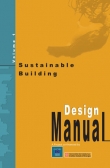Green Homes and Workplaces
Book Details
If it’s too hot, you switch on a fan. If it’s cold, you turn on a room heater. We do this unthinkingly, and it never occurs to us that had the building itself been designed differently, neither may have been necessary. Amory Lovins’s home high up in the mountains in Colorado uses no grid-supplied electricity and yet is warm enough to grow bananas and comfortable 24/7 all the year round. It all comes to wise building design.
Living in a hot and dry climate? You need thick walls and shaded windows. Living along a coast? The warm and moist climate means you need ample ventilation and thin walls.
These are obvious solutions but architects have more tricks up their sleeves. After having helped many buildings to being certifiably ‘green’, the authors of this book explain what sustainable buildings are and how to ensure that our homes and workplaces are not only ‘thermally comfortable’ but well-lit and well-ventilated as well. “But I have no plans to build a new home” or “I live in a rented flat”, you may say. Never mind; the book offers some useful info to you as well. For example, do not set your AC too low: approximately 27 °C is good enough, and you will save much more.
What sets Green Homes and Workplaces apart from other books is the simple and clear explanations of fundamentals and liberal use of illustrations. The authors aim to demystify the concepts and empower everyone to think and live green. For example, are you worried about polluted air indoors? Try a couple of houseplants. Living on the top floor? Try a reflective paint that can lower the inside temperature by at least a couple of degrees.
Although meant to be a guide to the concerned citizen, the book also has a more profound message: as green-buildings practitioners on the frontline of market transformation in India, the authors believe that our homes, buildings, and communities must move from not just doing less harm to becoming truly regenerative.
Table of Contents
- Foreword
- Preface
- Cities, buildings, people: Energy / Transport / Solid waste / Water
- Climate, built environment, and comfort: Thermal comfort / Visual comfort / Air quality index
- Water: Measures to save water / Water quality is as important as quantity
- Energy: Climate-responsive design / Energy efficiency / Designing for different climate zones of India / Cooling techniques that consume less energy / Energy-efficiency measures / Integrating renewable energy with building design
- Waste
- The 6 R’s of sustainability: Rethink / Refuse / Reduce / Reuse / Repair / Recycle / Waste treatment technologies
- Conclusion
Keywords
You may also like...
-
 GRIHA Version 2019: The Sustainable Habitat Handbook (6 Volume Set)
Regular Price 11100.00
Special Price 9990.00
GRIHA Version 2019: The Sustainable Habitat Handbook (6 Volume Set)
Regular Price 11100.00
Special Price 9990.00
-
 Vernacular Traditions: contemporary architecture
Regular Price 1195.00
Special Price 1076.00
Vernacular Traditions: contemporary architecture
Regular Price 1195.00
Special Price 1076.00
-
 Sustainable Buildings - Design Manual: Vol 2
Regular Price 695.00
Special Price 626.00
Sustainable Buildings - Design Manual: Vol 2
Regular Price 695.00
Special Price 626.00
-
 Sustainable Building Design Manual- Volume I
Regular Price 501.00
Special Price 451.00
Sustainable Building Design Manual- Volume I
Regular Price 501.00
Special Price 451.00


